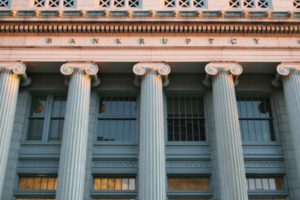Looking back at 2019, we saw the Consumer Financial Protection Bureau (CFPB) release the latest quarterly consumer credit trends report, which describes how the volume and types of bankruptcy filings have changed in the period from 2001 through 2018, which includes the enactment of the Bankruptcy Abuse Prevention and Consumer Protection Act (BAPCPA) and the Great Recession of the last decade.
The report studies consumers who filed for Chapter 7 or Chapter 13 bankruptcy between 2001 and 2018. Chapter 7 bankruptcy debtors liquidate nonexempt assets to repay creditors while Chapter 13 bankruptcy debtors enter into a repayment plan to repay all or some portion of their debt.
Key findings of the CFPB report include:
- From 2001 – 2004, about 75 percent of individual bankruptcy debtors filed a Chapter 7 bankruptcy case. BAPCPA, which took effect in October 2005, restricted access to Chapter 7 by establishing a means test and requiring the filing of a Chapter 13 bankruptcy case for those with income above a certain threshold. Many Americans rushed to file before BAPCPA took effect and increased the share of Chapter 7 filings to 80 percent of all personal bankruptcy filings in 2005.
- In 2015 – 2018, with the effects of the Great Recession finally fading, Chapter 7 bankruptcy filings seem to have stabilized at about 63 percent of personal bankruptcy filings.
- Median credit scores of Chapter 7 and 13 debtors one year before filing increased after BAPCPA but declined in 2010. This may be the result of debtors experiencing a negative financial shock during the Great Recession, thus lowering their credit scores.
- Median credit scores increase steadily from year-to-year after consumers file a bankruptcy petition. Median scores for Chapter 7 filers recover more quickly than those for Chapter 13 filers. This may be the result of Chapter 7 debtors receiving a much quicker and more likely discharge of their filings. Both Chapter 7 and 13 debtors who filed between 2001 and 2004 received a second shock from the Great Recession, which slowed the recovery in median credit scores.
- Median scores five to ten years after filing are greater for more recent Chapter 7 and Chapter 13 filers.
- Student debt has steadily increased over the 2001 to 2018 time period for bankruptcy filers, which is consistent with an overall increase in total student loans outstanding over the same period.
Given that BAPCPA became effective just before the Great Recession, it is difficult to distinguish the effects of BAPCPA from the effects of the financial crisis on the credit scores and debt levels of consumers who file for bankruptcy.
Talk to the Morrison Law Group about your Chapter 7 or Chapter 13 bankruptcy options. Call 801.456.9933 today to schedule a FREE consultation. We are Utah’s only statewide bankruptcy law firm and have locations in Ogden, Logan, Sandy, and St. George to serve the residents of the counties of Weber, Cache, Salt Lake, Utah, Morgan, Davis, Washington, and surrounding areas.



